Ground meat jerky can be a great alternative to whole muscle jerky. Many people like ground meat jerky because it’s easier to chew, tastes better, is simple to make, and so on. To find out if you like ground meat jerky you have to make some!.
Below are two ways of making ground jerky. One is with a jerky gun and the other is with common household appliances. So lets get started! Jump to:
Making your own jerky at home can be an incredibly rewarding experience. Not only do you get delicious homemade jerky but you also control the flavors and quality of ingredients. However when it comes to ground meat jerky, many people wonder about the safety of using raw ground beef and how much cure is needed in the recipe. In this comprehensive guide, we’ll look at why cure is used, how much is needed for ground meat, and what the best practices are for safely making ground beef jerky at home.
Why Use Cure in Jerky Recipes?
Curing salts or pink salts are used in jerky and other cured meat recipes for two main reasons
1. Food safety: The nitrites in cures prevent the growth of harmful bacteria like botulism. This is especially important with ground meats.
2. Preservation: Cures help preserve meats by reducing oxidation and rancidity during the drying process. This gives jerky a longer shelf life.
While whole muscle jerky may not need a cure if being eaten right away, it is highly recommended to use a curing agent when making ground meat jerky. The grinding process introduces more bacteria throughout the meat, so the added protection of nitrites is important.
How Much Cure Should You Use?
The recommended usage for curing salts in ground meat jerky is:
-
1 teaspoon per 5 lbs of ground meat
-
Or 1 level teaspoon per 2.5 kg of ground meat
This level provides the proper food safety protection while keeping nitrite levels in check. Excessive amounts of cure should be avoided.
Tips for Measuring Cure:
-
Use an accurate scale if weighing cure. Volume measures can vary.
-
Level, not heaping, teaspoons should be used for best results.
-
Follow manufacturer’s instructions for any commercial premixed cure blends.
-
Cure #1 or Prague Powder #1 are commonly used types.
-
Reduce cure amount if using a fast 1-2 hour ground meat jerky recipe.
Can You Make Ground Beef Jerky Without Cure?
It’s generally not recommended to make ground meat jerky without any cure at all. The risk of bacterial growth is too high, especially with longer drying times. Here are a couple options if you want to limit or avoid added nitrites:
-
Use a vinegar-based marinade. The acidity provides some protection.
-
Substitute celery juice powder for cure. It naturally contains nitrites.
-
Cook the ground beef first to 160°F internal temp before drying into jerky.
-
Keep the jerky refrigerated and eat within 1 week.
However, for the best safety and quality, a small amount of curing salt is advised in all ground meat jerky.
Tips for Safely Making Ground Beef Jerky
Follow these best practices when making ground beef jerky at home:
-
Use freshly ground beef or venison within 2 days. Freeze first if using game meat.
-
Mix in the correct amount of cure per recipes above.
-
Keep all equipment and hands clean when forming jerky.
-
Cook to an internal temp of 160°F. Use a thermometer to verify.
-
Let jerky cool fully before packaging.
-
Refrigerate and consume within 1-2 weeks for quality and food safety.
-
Look for an uncured, vinegar-based recipe if wanting to limit nitrites.
-
Discard any jerky with an off smell or appearance. Don’t take risks.
Storing and Handling Jerky Safely
Proper storage and handling will keep your jerky safe to eat and retain quality:
-
Let jerky cool to room temp before storing. Don’t seal warm jerky.
-
Store in sealed bags or airtight containers in the refrigerator.
-
Label jerky with the date it was made.
-
Use within 1 week for uncured recipes, 1-2 months for cured jerky.
-
Discard any jerky that smells bad, looks slimy, or feels overly soft or sticky.
-
Keep humidity low in storage areas to prevent mold growth.
Following basic food safety rules will ensure your homemade jerky stays fresh and delicious for many weeks to come. Be extra cautious when working with raw ground meat.
Frequently Asked Questions
Q: Can I make ground beef jerky in a dehydrator instead of an oven or smoker?
A: Yes, a dehydrator can be used to make ground meat jerky safely. Just be sure to use cure and follow the manufacturer’s instructions.
Q: How long does homemade ground beef jerky last?
A: Properly cured jerky will last 1-2 months refrigerated. Uncured jerky only lasts 1 week. Freezing can extend the shelf life.
Q: What’s the best lean ground beef to use for jerky?
A: Look for 95% or higher lean ground beef. Ground venison or other wild game also works great for jerky.
Q: Can I use Morton’s Tender Quick instead of Cure #1?
A: Yes, you can substitute Morton’s Tender Quick in jerky recipes. Just use the same recommended usage levels listed above.
Q: Is ground turkey or chicken safe to use for homemade jerky?
A: Yes, you can use lean ground turkey or chicken. Follow all the same safety guidelines as with ground beef jerky.
Q: How can I tell when my homemade jerky is done and fully dried?
A: It will crack but not break when bent. The internal temp should reach 160°F for ground meats.
Enjoy the Flavor and Safety of Homemade Jerky
With the proper use of curing salts and food safety practices, making delicious ground beef jerky at home is totally achievable. For the best quality and food safety, be sure to use the recommended amount of cure in your recipes. Follow the guidelines above for handling raw meat properly and dehydrating thoroughly. Homemade jerky makes a protein-packed snack you can feel good about enjoying.
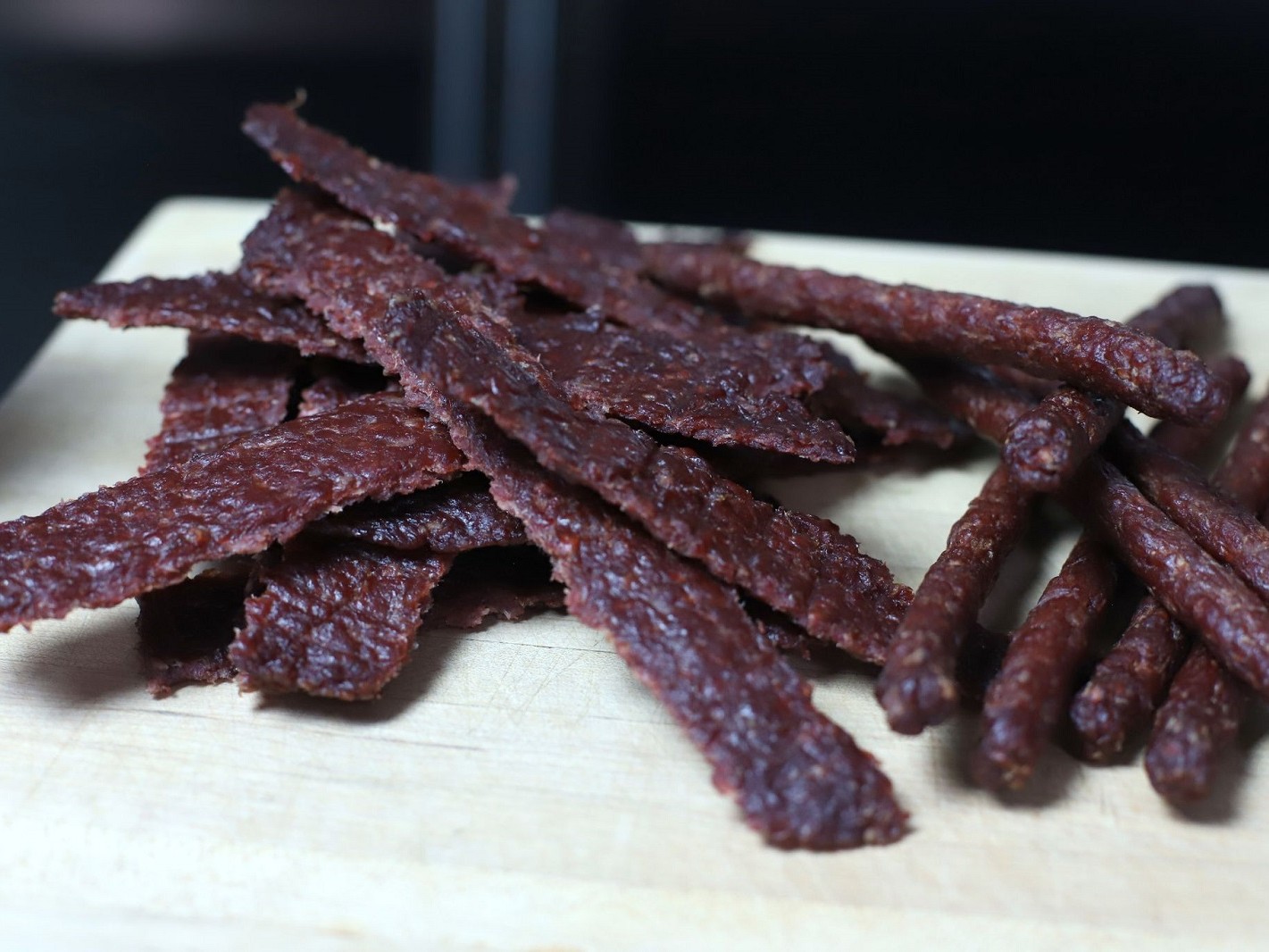
Using a jerky gun
Choose a LEAN package of ground beef. Dont use any beef that has more than 10% fat. When I make ground beef jerky I use 96% Lean / 4% Fat meat.
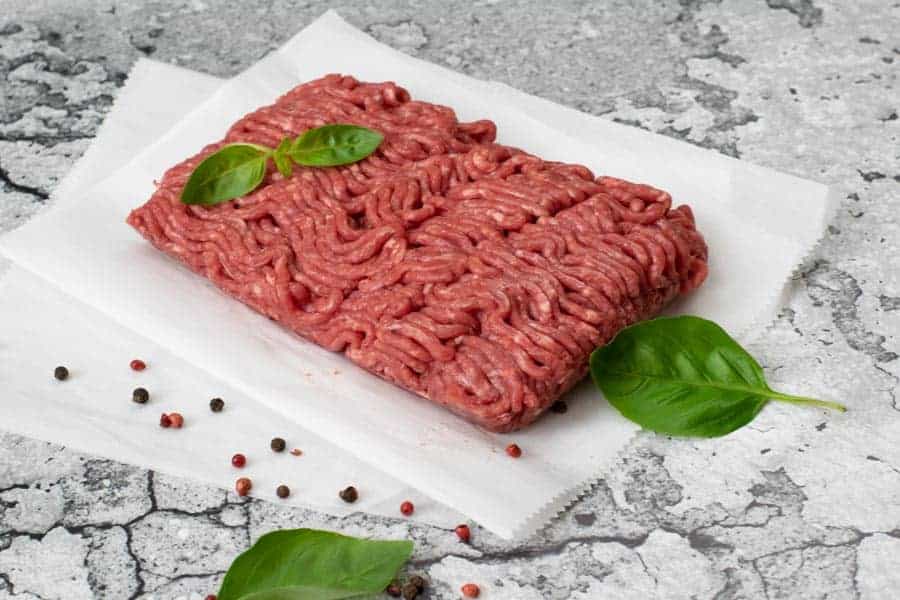
Mix the meat well with your hands and season it with your favorite recipe. Then put it in the fridge for 3 to 24 hours so the meat can stick together. Don’t have a recipe? Don’t worry, I have dozens of tried-and-true beef jerky recipes for you to choose from. Many of these recipes work for ground beef as well as whole muscle jerky. Pick a recipe with VERY few liquid ingredients. 1-2oz of liquid per 1 pound of meat is about the perfect amount. If there aren’t any liquids in the recipe, you can use COLD water to help mix the meat and seasonings.
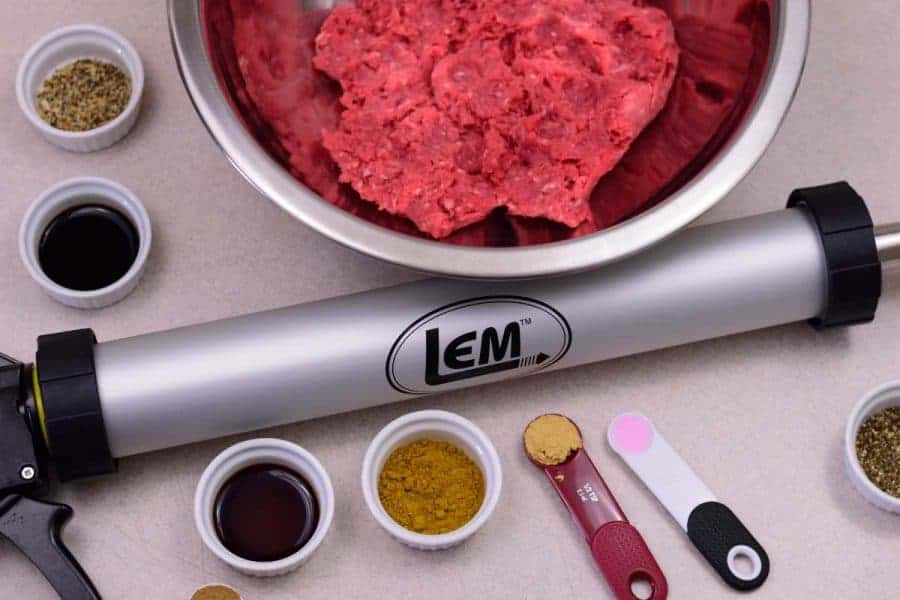
First, take the meat out of the fridge. Then, put small amounts of ground beef into a Jerky Gun. Make sure that there are no air pockets within the meat when packing the tube. Air pockets will prevent the meat from being packed together and in long strips. I personally use an LEM Jerky Cannon which works great!.
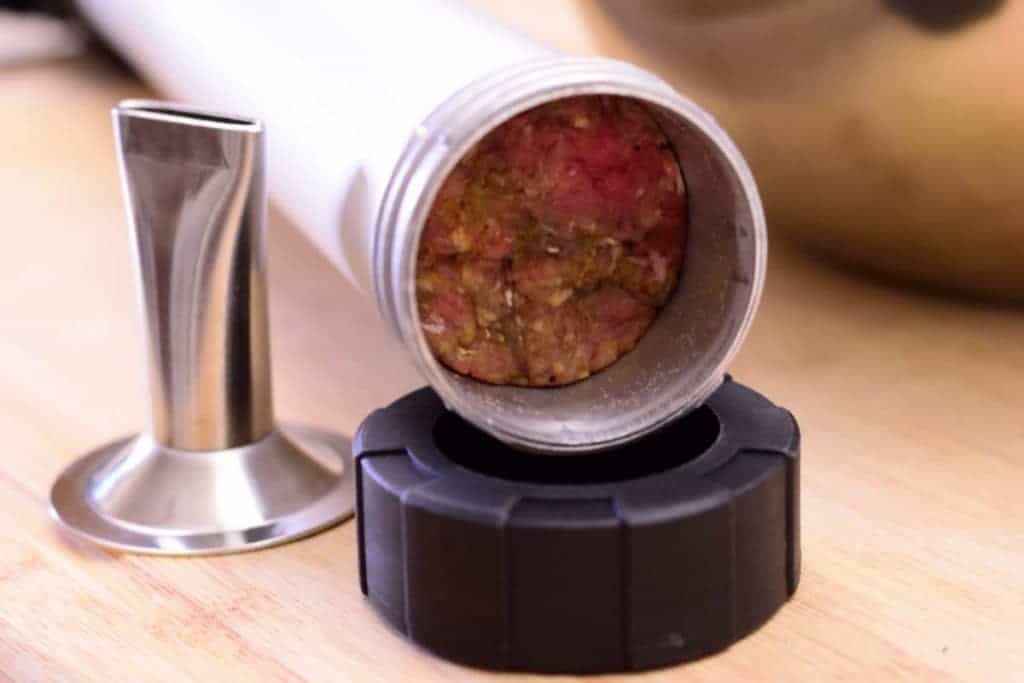
Shoot strips of jerky onto your dehydrator trays or on baking sheets if using an oven. Keep a knife nearby to cut the beef off of the nozzle once the strip is the length you want it to be. This will allow you to begin another beef jerky strip. Shown below are trays from my Excalibur Dehydrator.
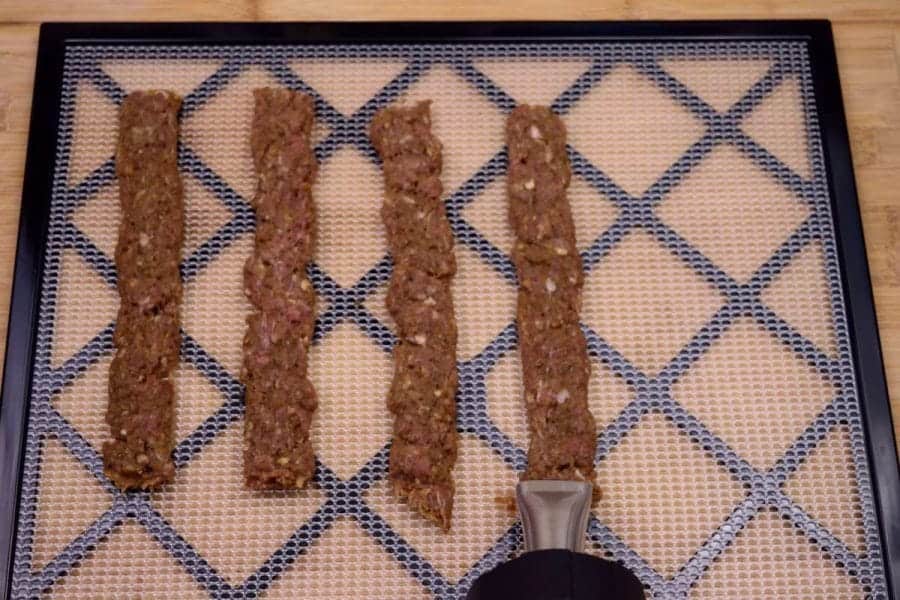
Dry at 160°F for 3-8 hours. Check after 3 hours and dry as needed checking every half hour.
Jerky will be finished when it bends without breaking in half. The jerky should still feel soft to the touch and not hard on the outside. ENJOY!!! You just made ground beef jerky! Yep, its that easy.
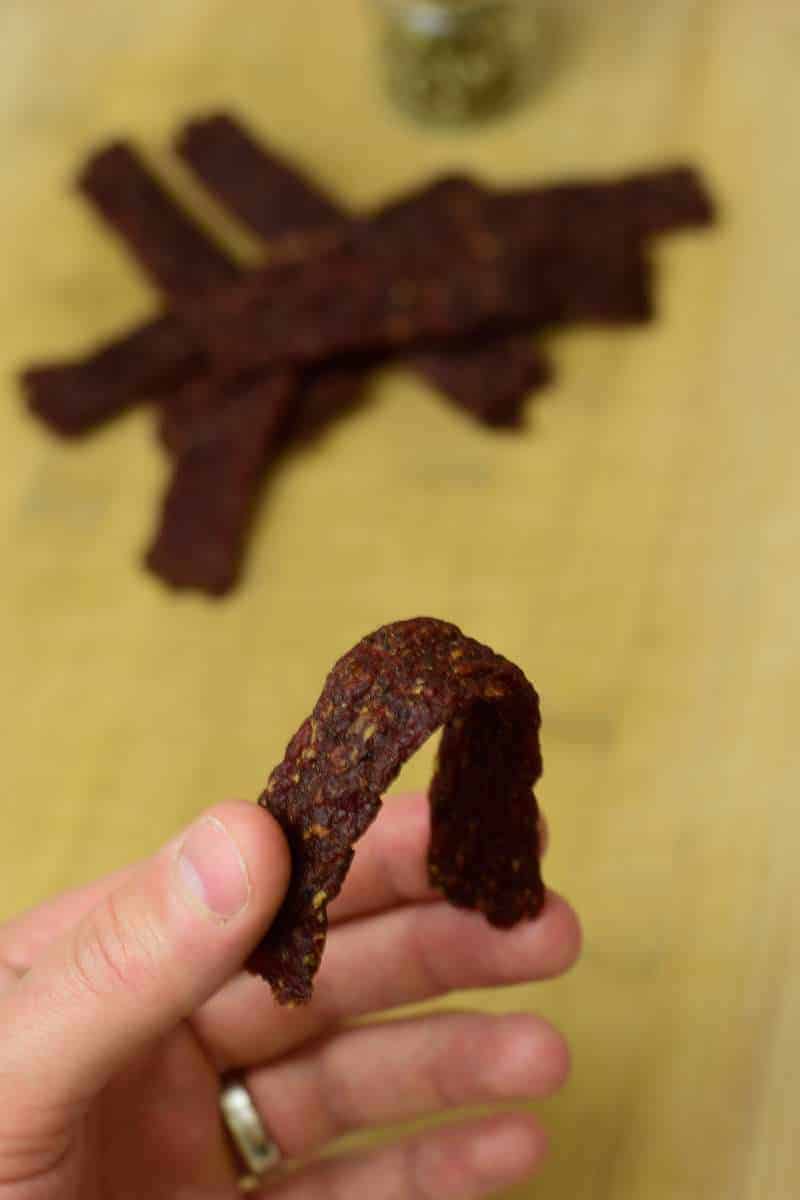
Ground Jerky Without a Jerky Gun
Start with the same LEAN package of ground beef that you would use if using a jerky gun.
Mix the meat well with your hands and season it with your favorite recipe. Then put it in the fridge for 3 to 24 hours so the meat can stick together. Don’t have a recipe? Don’t worry, I have dozens of tried-and-true beef jerky recipes for you to choose from.
Below you can see my Coconut Ground Beef Jerky.
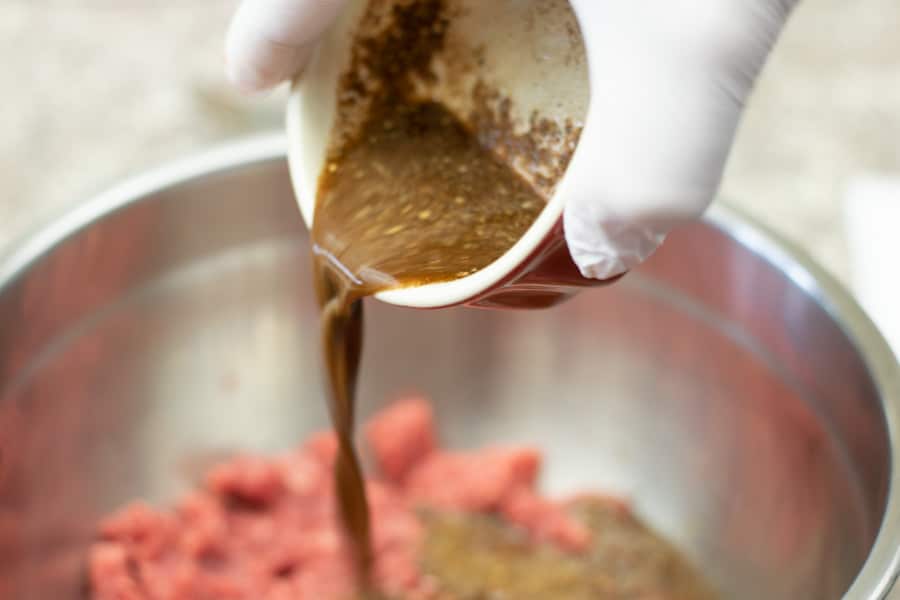
Many of these recipes work for ground beef as well as whole muscle jerky. Pick a recipe with VERY few liquid ingredients. 1oz of liquid per 1 pound of meat is about the perfect amount. If there aren’t any liquids in the recipe, you can use COLD water to help mix the meat and seasonings.
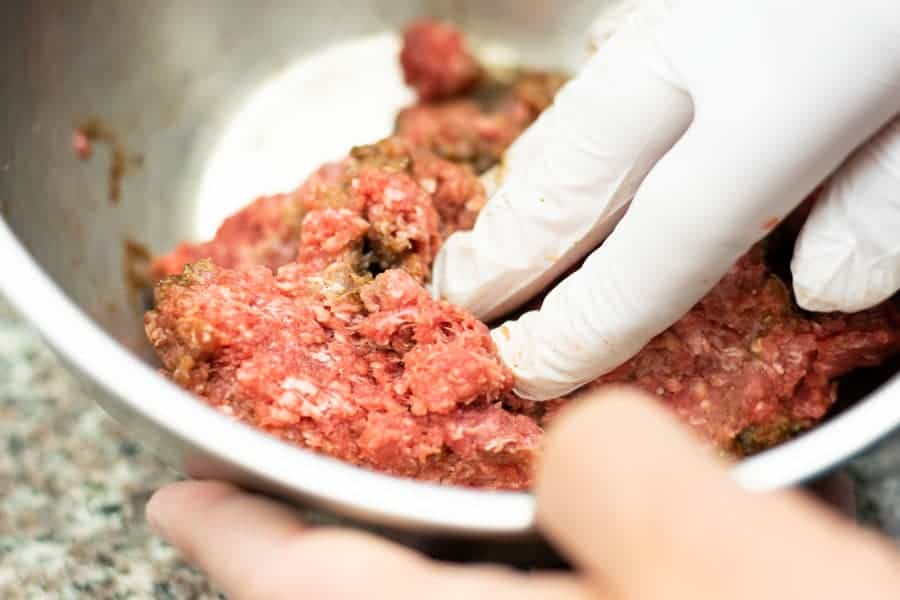
After taking your meat out of the refrigerator, place it on a cookie sheet lined with parchment paper. With the use of a rolling pin, flatten the beef to about a ¼ inch thick.
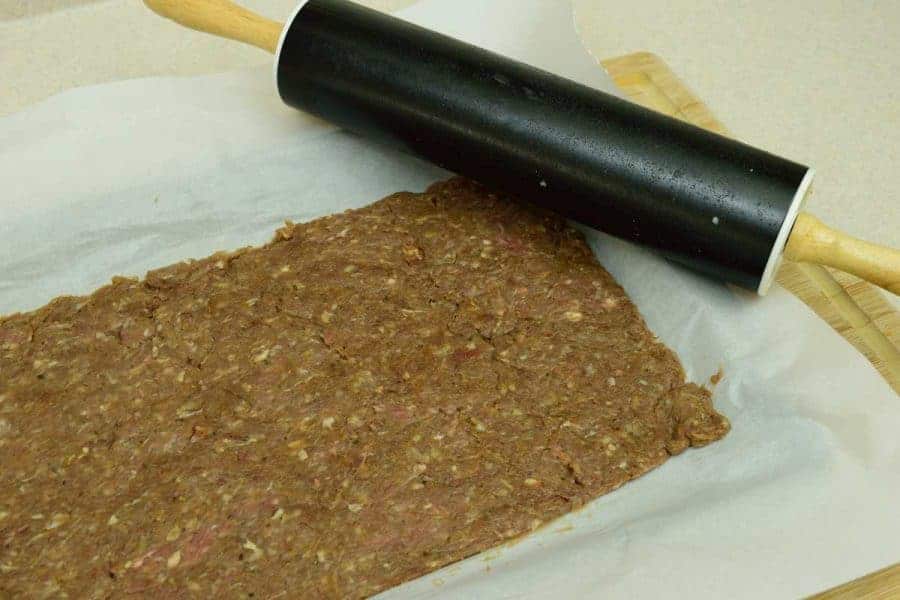
Score the jerky into strips with a dull knife or pizza cutter about an inch wide. Dont worry about making sure if they are completely cut all the way to the paper. You are just trying to score the strips so it will break apart easily after drying.
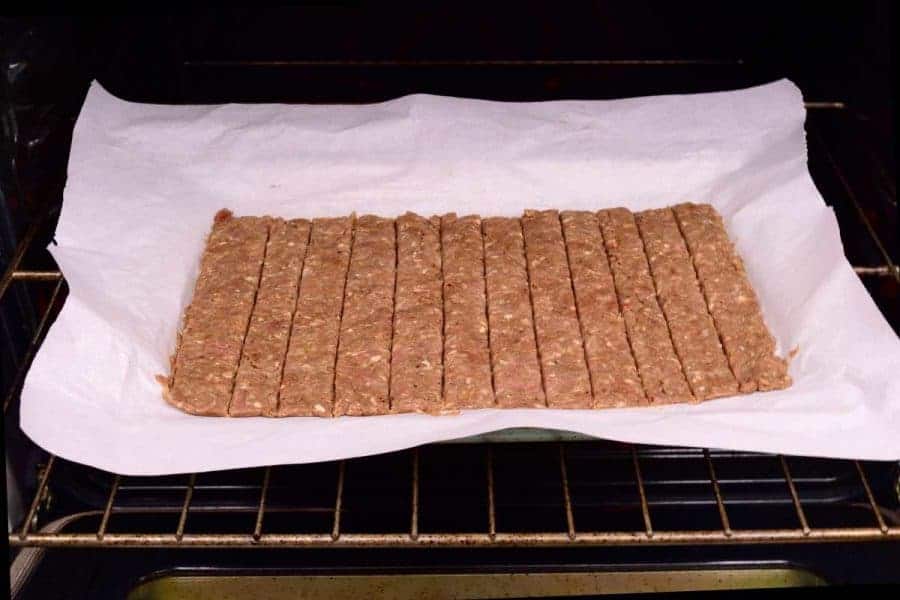
If drying in an oven, preheat the oven to 300° F. The beef should be put inside and baked for 10 minutes with the door closed to heat the strips up to 160°F.
Now cool the oven to 170°F or the lowest setting on your oven. Bake for two hours with the door partly open. (Put a wooden spoon in the door to let air flow through.) After two hours, flip the meat over and pat it dry with a paper towel. Dry for another two hours, or until the jerky is done.
The ground beef jerky will be finished when it bends without breaking in half. The jerky should still feel soft to the touch and not hard on the outside.
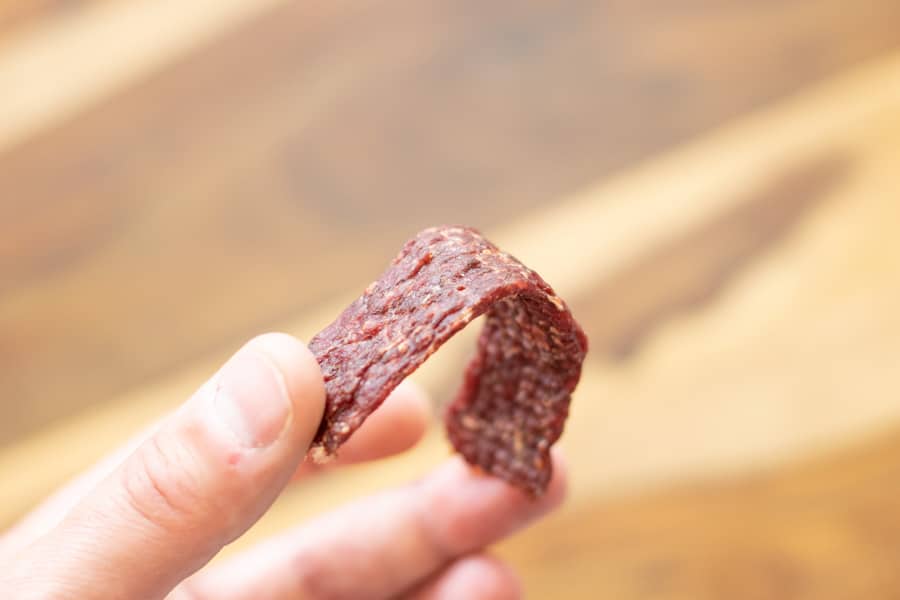
Ground meat jerky is made from meat that has been processed and ground. This gives it more surface area than whole meat, which makes it easier for bacteria to grow. For this reason I recommend:
- When mixing the ground meat with the spices and putting the meat into the jerky gun, latex gloves should be worn.
- When you make ground meat jerky, make sure you use a curing salt. If you are making whole muscle jerky, you don’t have to do this step. But if you are making ground meat jerky, you should always do it for food safety reasons.
- Before you cook the beef strips, heat them up to 160°F on the inside to help kill any bacteria that might be there. This needs to be done at the start of the drying process.
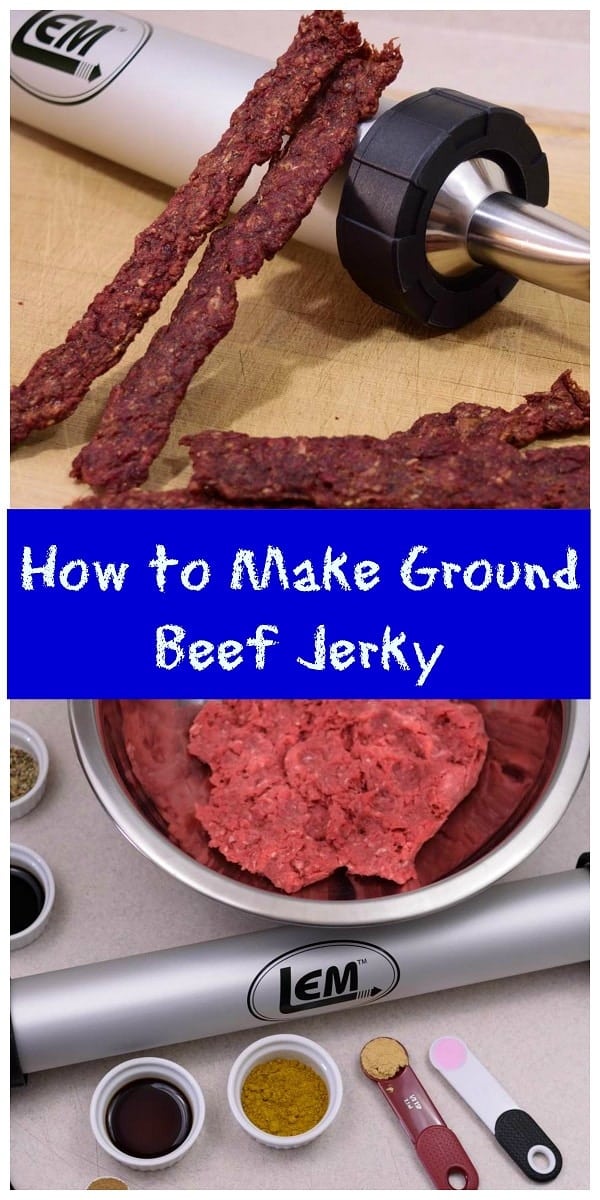

As a grill master and seasoned jerky connoisseur, grilling/smoking meats consumes most of my time. Here I share my favorite jerky and grilled/smoked recipes with you!.
